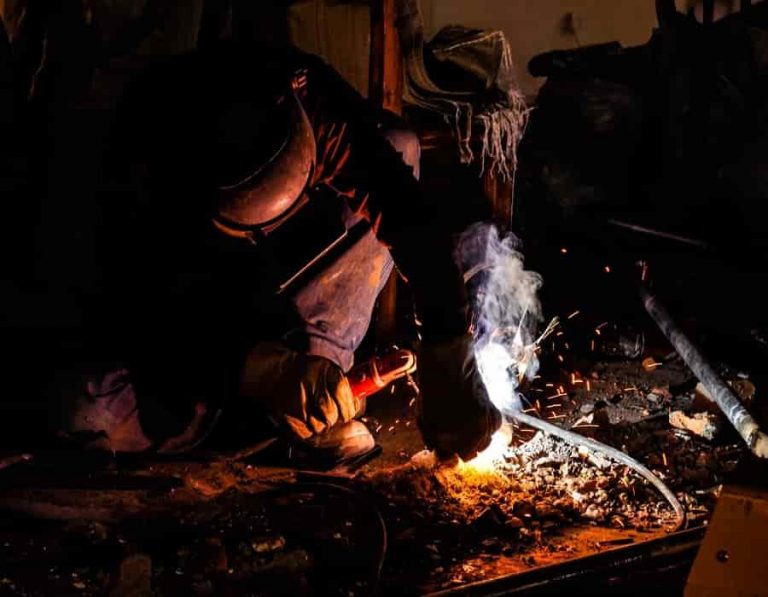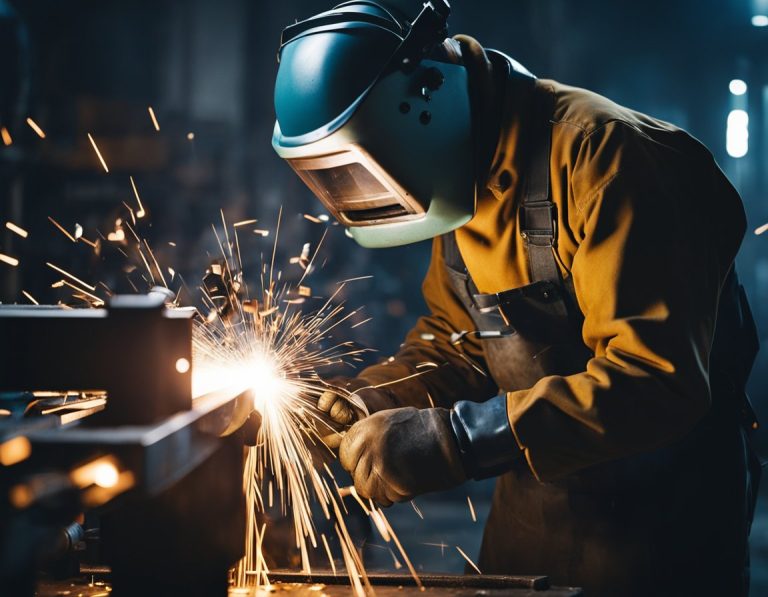Advantages And Disadvantages Of Welding Joints
Welding is a metal or solid parts joining process which provides a strong and permanent joint. There are many types of welding like arc welding, pressure welding, gas welding, etc.
Not only that, there are various joining types too like Butt, Lap, Edge joint, Tee, and many more. All of these joint comes with some pros and cons. Though there are so many advantages of welding joints, there are some disadvantages too.

Here in this article, I’ll discuss the advantages and disadvantages of welding joints in detail. I’ll describe various aspects of weldings. Moreover, I’ll explain where you should use this and where not.
So, let’s get started.
Table of Contents
Advantages of welding joint
Welding is one of the most popular and widely used methods of joining solid parts together. The main reason is it’s strong and sustainable. But there are so many reasons to prefer welding.
Now, it’s time to discuss those reasons first. What is the advantage of welding? Are this effort and cost worth it? The answer is given below. So, let’s focus on the welding advantages.
Read More: Is Welding Bad For Your Health? Know Details!
Strength and versatility:
Welding joints are really so strong that sometimes it’s stronger than the parent material. That’s why it’s used everywhere when sustainable and permanent joining is necessary. Due to the fusion of parent and filler metal, the bond becomes stronger than rivets or other joints.
Not only that, welding can be used in most cases of joining. Almost all metals are joinable by welding. So, this versatility is also a reason for this process being so popular.
Absence of leakage:
Another great feature of welding is that there is no possibility of leakage in the welded area. The metals get melted and mixed together to form a rigid and continuous body. For this feature, welding is a must for ships, submarines, or even spaceships.
Simplicity in design:
The welded area can be aesthetic if an expert welder handles this. You can find mesmerizing videos on the internet where welding is done so beautifully that it looks amazing. There is no drilling or cutting of metal and damage to the original shape. Rather, just a small bit can attach several parts together by welding.
Stress and load capacity:
You have already known that the strength of welded metal or area is no less than the parental material. Rather, in some cases, it’s even stronger. So, the stress and load-carrying capacity of the joint increase. This increases the effectiveness too.
No shape dependency:
Welding can be done on any type of shape and in any direction. Whether it is a circular body, where riveting can be a tough job, welding can easily manage the situations. This is why it is the primary process of joining large industries where complex machines are operated.
So, you can see how various metals of different sizes and shapes can be joined by welding. But that’s not the whole scenario of course.
There are some drawbacks too. Don’t worry, I’m going to cover the disadvantage of welding in the next topic. Just keep reading.
Disadvantages of welding joints
The main arc-welding disadvantages are that it can damage the metal or can go wrong if not handled properly. Besides, it also has some metallurgical effects on metals.
Here, I’m going to list 4 disadvantages of welding below. You should know and remember them if you are willing to do some welding in near future. Because this process is not 100% accurate for every situation.
Let’s see why sometimes such a good method of joining needs some consideration too.
Change property:
Due to high heat and fusion of metal, sometimes the metallurgical property of parent metal can be altered. If this happens, it can affect the structure. Especially if you are working on a large and sensitive structure, this thing must be taken care of.
As there is no clearance at the joining point, under compression or high-stress crack can be developed.
Distortion:
Since welding is a continuous heating process, it is a sensitive and hard-to-handle job. If the heating is not uniform, it can affect the fabrication process and distort the metal. Also, there may observe residual stress at the joining point which eventually will fail under extreme conditions.
High skill required:
Welding is one of the toughest jobs and needs a highly experienced person to perform it perfectly. If an amateur without any expertise does it, they can damage the shape or aesthetic of the structure.
Again, the job is dangerous and needs protective gear and proper training before starting. So, finding the right person for the job may be hard sometimes.
Poor performance under vibration:
Welding joints can be vulnerable under continuous vibration. That’s why this is not used in railway or bridge construction. Because at those places vibration will occur for a very long time.
And this can eventually damage the welded area. So, where there is a possibility of frequent vibration, you should not use welding. Rather you can go for rivet in those cases.
Besides all these, welding needs close supervision even after completing the job. Any kinds of unwanted changes should be considered and maintained. This is a costly process and needs expertise also.
Frequently Asked Questions
If you don’t have proper knowledge and training, welding can be hard and dangerous for you to do.
Yes. You can use Brazing, Glues, Rivets, Bolts, or Screws instead of welding if it meets your requirements.
Of course. Welding is a permanent joint. So, once welded, you can’t reverse it without destroying some portions of it.
Conclusion
Welding is a highly effective method of joining metal parts together. Where strength and sustainability are the prime concern, welding is one of the best choices.
But what offers so many features must come with some drawbacks too. The process is costly and needs initial investment. Moreover, without proper training, performing this job can be dangerous for anyone.
So, it all depends on what your requirements are. Since now you have a fair idea about the advantages of welding joints and the disadvantages too, think which one is the best suited for your job.
Read More: How To Weld Aluminum With A Stick Welder?






